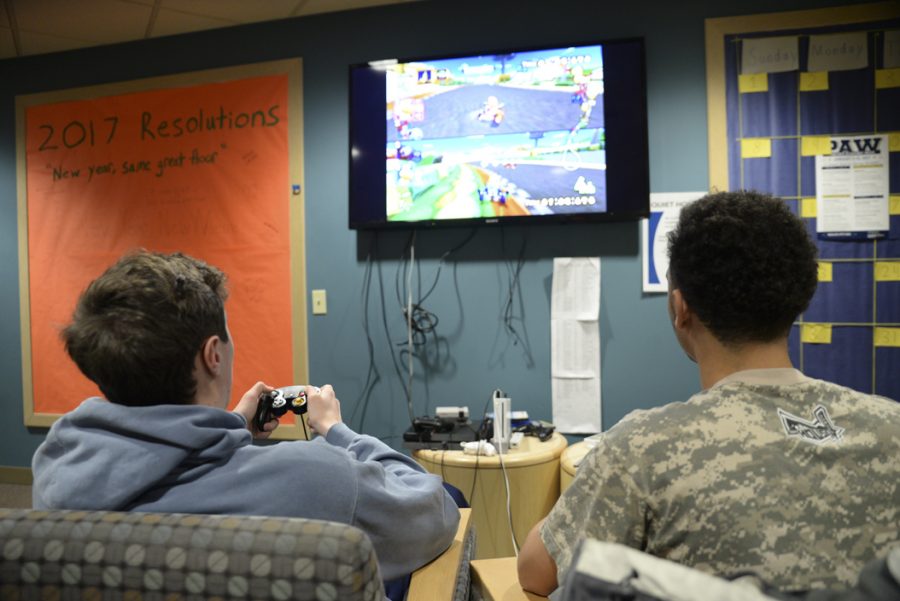When they aren’t in class, some students spend their time trekking through the forest for lost treasure while others creep through cityscapes stealing expensive cars. Some brave dorm-dwellers slay demons while their neighbors steer rocket-powered buggies to score goals.
Video games are a classic pastime — and in some cases lifestyle — for many students on Pitt’s campus. To accommodate their needs, Pitt created a gaming Wi-Fi network this semester that roughly 1,000 students are now using to connect their consoles in Pitt dormitories.
Pitt’s Computing Services and Systems Development booted up the “Pitt Gaming Network” Jan. 2, to provide an easier way for Pitt students living in residence halls to connect their Smart TVs and gaming consoles to Pitt’s network, Pitt spokesperson Joe Miksch said. Previously, students had to connect their device to a laptop for Wi-Fi access and then connect the whole setup to the wall with an ethernet cable. Now, students can have a completely wireless connection, or with an ethernet cable to the wall without the laptop component.
Students can connect to the network after registering their device, by submitting a MAC Address Registration Request form to CSSD, and following instructions on Pitt’s technology website.
Miksch said CSSD created the network based on student feedback from consultants who work in residence halls, Help Desk questions and the Wireless Feedback Survey on My Pitt.
The new network doesn’t support functions that share network feed ー meaning people can’t track what is sent on the network ー and other advanced functions, such as screen sharing, and each student can register only one device because of “limited administrative resources,” according to Pitt’s technology website.
“Limiting the number of devices connected to the Pitt Gaming Network helps ensure that people using that network have a good experience,” Miksch said in an email. He added that CSSD is going to monitor how well the policy is working throughout the rest of the year.
Jared Klatskin, president of the Pitt Gaming Club, said he wishes that Pitt had this network while he was living in the dorms. In the past, the senior communication major required two ethernet cables and a USB and ethernet adapter to set up his console.
“The steps on the website were super unclear,” Klatskin said. “And most kids I know decided to just give up on the instructions and figure it out themselves.”
Klatskin said that fellow gamers found it a lot easier to follow the new instructions.
Ben Zak and Joe Wrona, first-year students living in Nordenberg Hall, said they had no issues setting up their consoles on the new network — the whole process took only a few hours.
“The only thing I noticed was that there is a lag when you try to just do it wireless,” Zak said. “I experience it while trying to play Call of Duty, so I just decided to use the [ethernet] cable, and that got rid of the lag.”
Although he’s not a student in one of Pitt’s dorms, Lorin Grieve uses games in the classroom. Grieve, a Pitt School of Pharmacy and School of Information Sciences professor, teaches pharmacy classes that incorporate games and an SIS course called Game Design. He hasn’t used the gaming network yet in his classes, but said the new network was great news.
“There are so many console exclusive games I wanted to bring in and show my students as part of the class and couldn’t because of the hoops to jump through,” Grieve said in an email. “I will definitely be looking into the network for next year.”
The Entertainment Software Association estimated that, in 2016, at least one person in 63 percent of U.S. households played video games for three or more hours a week.
“I think gaming as an activity has been mainstream for a while, and this is an effort on Pitt’s part to enhance the quality of life for students who enjoy playing video games,” Grieve said.


